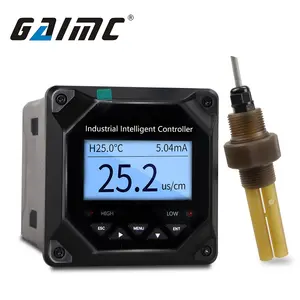Understanding TDS Controllers
Total Dissolved Solids (TDS) controllers are critical components in water purification systems, particularly in Reverse Osmosis (RO) setups. These devices play a pivotal role in monitoring and maintaining the TDS level of purified water, ensuring it is safe for consumption and suitable for a variety of applications. A TDS controller is not just a tool but an assurance of water quality, making it an indispensable part of modern water filtration systems.
Types and Applications of TDS Controllers
The market offers a range of TDS controllers, including auto TDS controllers and manual variants. These devices are commonly integrated into RO systems, such as the Kent RO with TDS controller, to provide users with the ability to adjust the TDS levels according to specific requirements. The versatility of TDS controllers extends to various sectors, from domestic to commercial, highlighting their importance in ensuring the quality of drinking water.
Features of TDS Controllers
A high-quality TDS controller is equipped with features that facilitate ease of use and precise control. For instance, the Kent Grand Plus ZWW model includes an advanced TDS control system that allows users to manage the mineral content in their water effortlessly. Additionally, TDS controllers often come with automatic calibration functions, enhancing their accuracy and reliability in different temperature conditions.
Materials and Advantages
TDS controllers are typically constructed from durable materials that can withstand the rigors of continuous use. The advantages of using a TDS controller, such as the Kent RO Elegant Lite, are manifold. They not only provide real-time monitoring of water quality but also help in extending the lifespan of RO membranes by preventing the buildup of excessive minerals.
Choosing the Right TDS Controller
Selecting the appropriate TDS controller, such as an aquaguard TDS controller or a Kent TDS adjuster, depends on the specific needs of the RO system and the desired level of TDS in the water. It is crucial to consider factors like the calibration capabilities, the range of TDS measurement, and the ease of installation when choosing a TDS controller for an RO system.
Maintaining Optimal TDS Levels
Maintaining the optimal TDS level is essential for the health and efficiency of RO systems. Devices like the Kent RO UV UF TDS and Kent RO TDS control units enable users to fine-tune the TDS levels, ensuring that the water quality meets the desired standards. Regular monitoring with a reliable TDS controller can lead to better tasting water and can contribute to the longevity of the water purification system.































 浙公网安备 33010002000092号
浙公网安备 33010002000092号 浙B2-20120091-4
浙B2-20120091-4